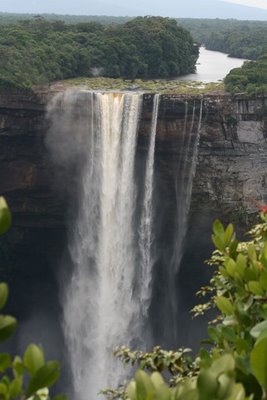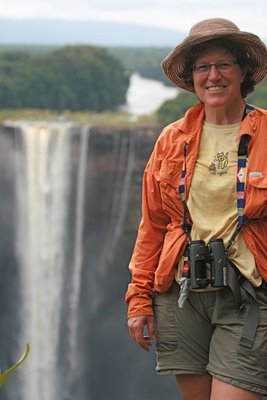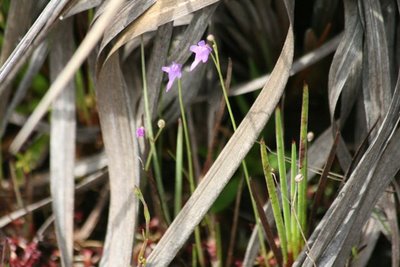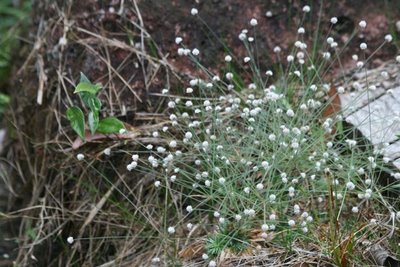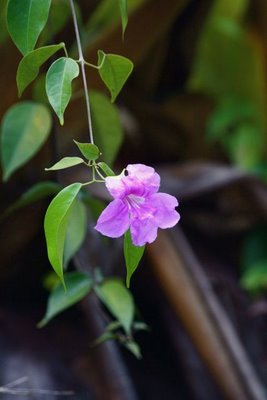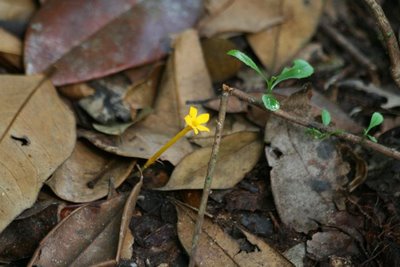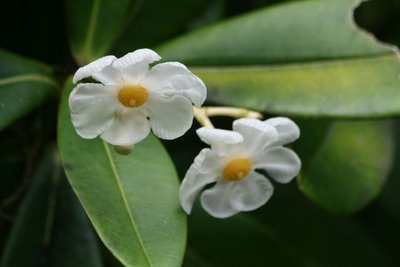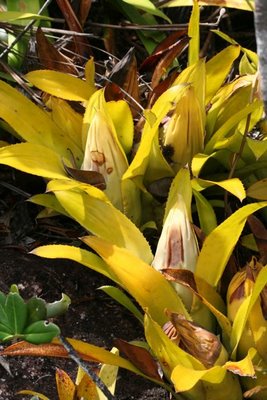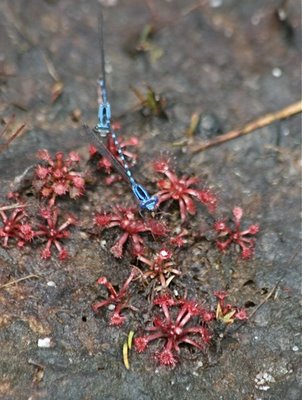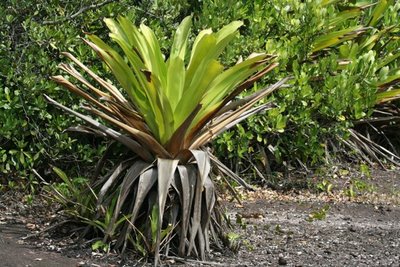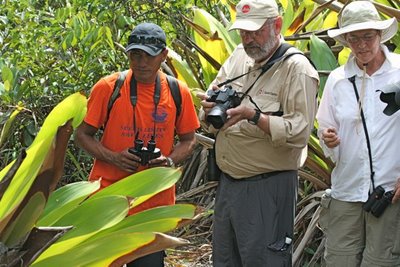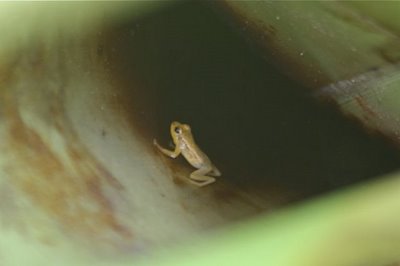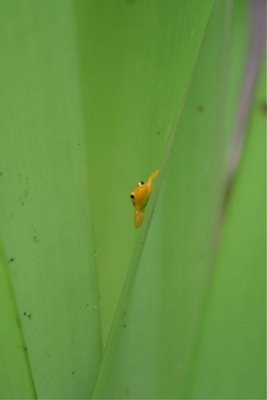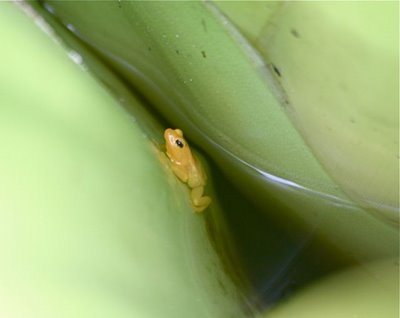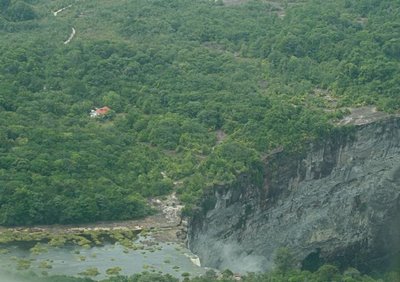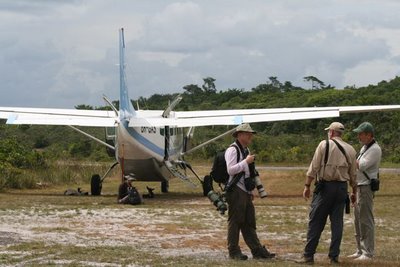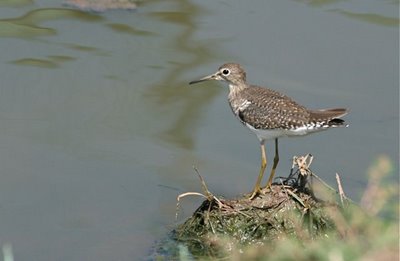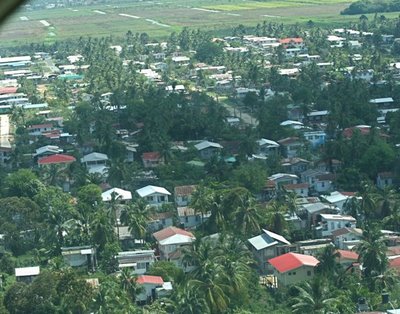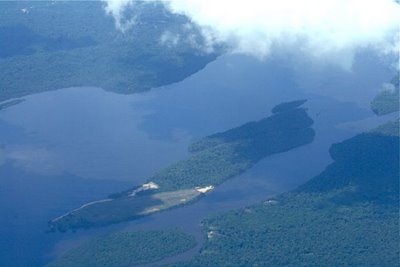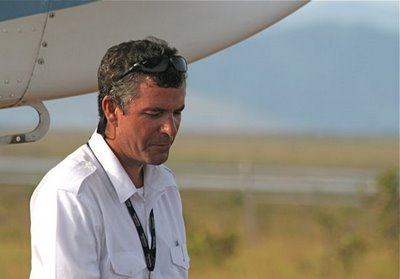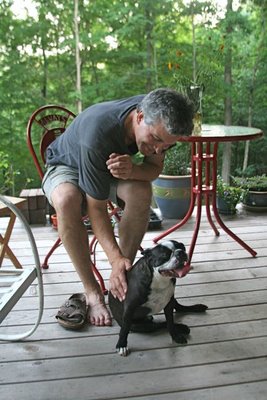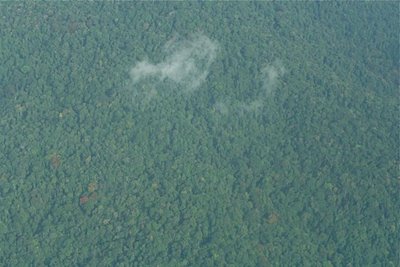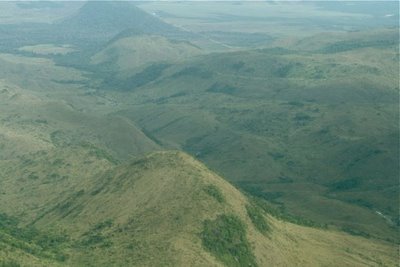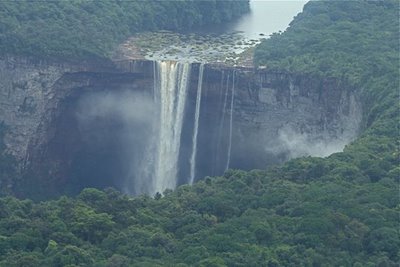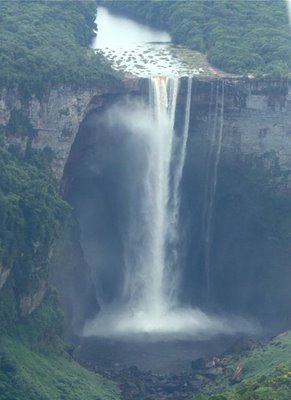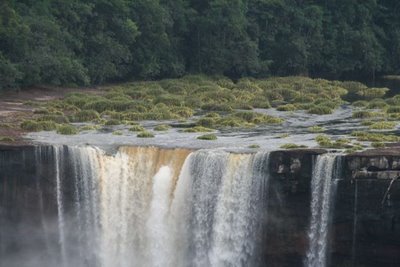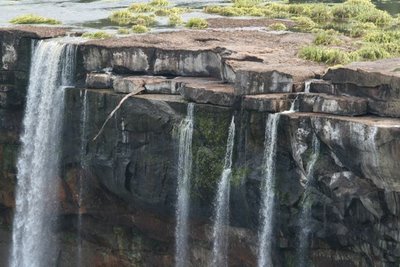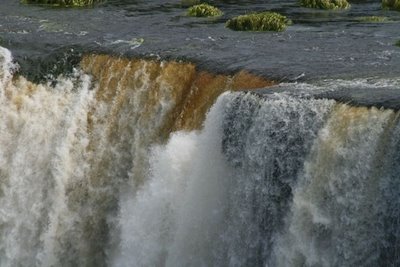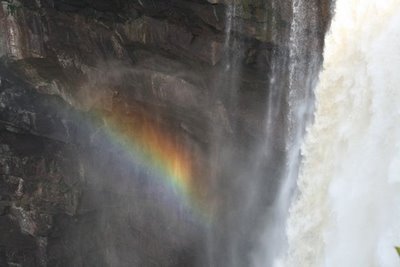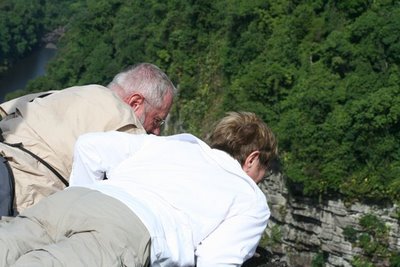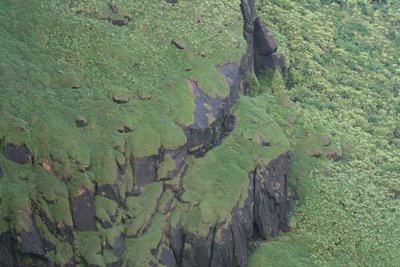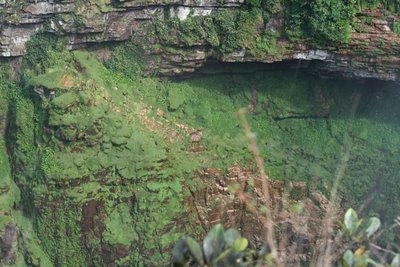Cock of the Rock!
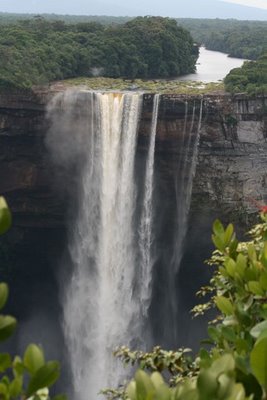 The falls, the tank bromeliads, the froglets would have been enough, more than enough. But Guyana's Kaieteur Falls Park would give us so much more in our too-short afternoon there. Because there is a bird living there, in this impossibly magical, vine-draped steaming forest, who can hurt your eyes with its color. It is the legendary cock of the rock.
The falls, the tank bromeliads, the froglets would have been enough, more than enough. But Guyana's Kaieteur Falls Park would give us so much more in our too-short afternoon there. Because there is a bird living there, in this impossibly magical, vine-draped steaming forest, who can hurt your eyes with its color. It is the legendary cock of the rock.I know. It's a weird name. Google it, and you get all kinds of heavy metal images right alongside stunning photos of a brilliant bird, an impossible bird. I didn't understand where it got its name until I walked in its habitat.
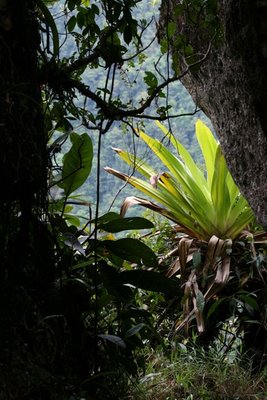
The cock of the rock needs rocks where it can nest. Huge, towering walls and slabs and jumbles of rock. The Science Chimp is elated to say that she will report later on the nesting habits of this marvelous bird. First, she needed to see her very first COTR. You can just imagine how excited I was. Wending our way silently through the forest, the wet floor padding our footfalls, we watched our guide and froze when he motioned that he had spotted the bird, low down in the jungly tangle, some distance ahead. We were approaching the lek site of a group of male COTR's, where they pose and display, hoping to attract visits from the burnt-brown females. Our first looks were a bit compromised by vegetation, but it was clear we had one heck of a bird in our sights.
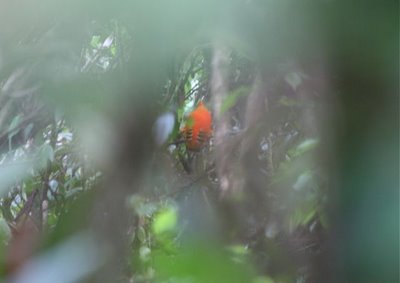
As quietly as we could, we maneuvered around until we could see and shoot around the obscuring leaves.
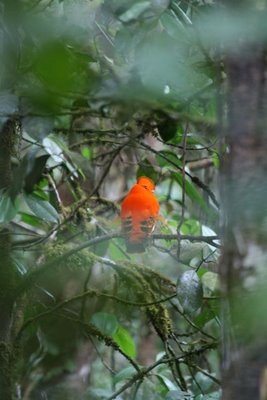 I shot image after image, upping my ISO to 1600, leaning against trees for support to lessen lens shake. I'm not digiscoping here, just pushing my 300 mm. telephoto lens to the maxx in the almost hopelessly dark and lightless jungle.
I shot image after image, upping my ISO to 1600, leaning against trees for support to lessen lens shake. I'm not digiscoping here, just pushing my 300 mm. telephoto lens to the maxx in the almost hopelessly dark and lightless jungle.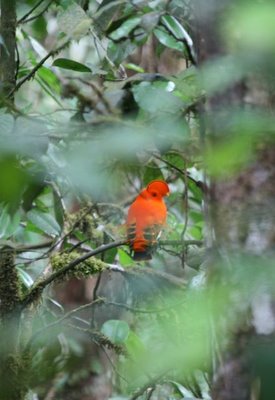 This is not some little songbird. It's a cotinga, one of the suboscine passerines, and a honkin' big one, about the size of a city pigeon. And the color of a neon orange traffic cone. There's no missing it, even as it sits quietly and still. Think about a pigeon this color and you get some idea what an impression it makes.
This is not some little songbird. It's a cotinga, one of the suboscine passerines, and a honkin' big one, about the size of a city pigeon. And the color of a neon orange traffic cone. There's no missing it, even as it sits quietly and still. Think about a pigeon this color and you get some idea what an impression it makes.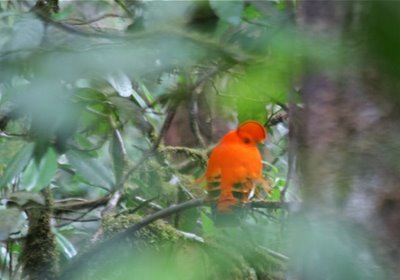 Nearer, nearer, trying hard not to upset the beautiful bird who perched so calmly for us. Ooh. What's that foofuraw coming off his back?
Nearer, nearer, trying hard not to upset the beautiful bird who perched so calmly for us. Ooh. What's that foofuraw coming off his back?They're filamentous plumes, orange as shredded carrots, that the female COTR likes to nibble on as the male crouches motionless on the ground before her. Nice touch.
Changing perches, he showed what a beefy broth of a beast he really was. Look at those strong yellow feet. Hey, Mr. Tangerine Man.
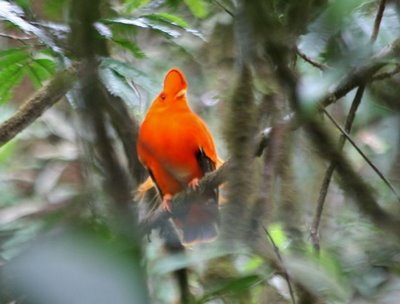 That's a semicircular crest, neatly edged in burnt orange, that he can erect and push forward so as to completely hide his bill. Not a whole lot of tail on this bird. But he's got a very cool rump. The frills on it reminded me of those awful panties people used to put on little girls, the kind meant to stick out from under a too-short Easter dress, with ranks of frills on them. I wish I could purge such untoward thoughts when I look at a bird, but they well up nonetheless.
That's a semicircular crest, neatly edged in burnt orange, that he can erect and push forward so as to completely hide his bill. Not a whole lot of tail on this bird. But he's got a very cool rump. The frills on it reminded me of those awful panties people used to put on little girls, the kind meant to stick out from under a too-short Easter dress, with ranks of frills on them. I wish I could purge such untoward thoughts when I look at a bird, but they well up nonetheless.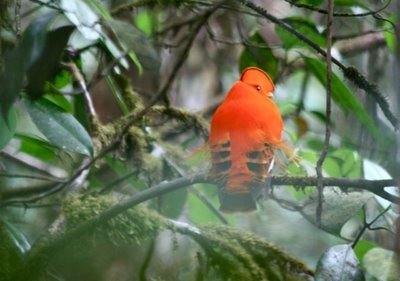
Though it's not that close, this is my favorite shot of the bird, on alert.
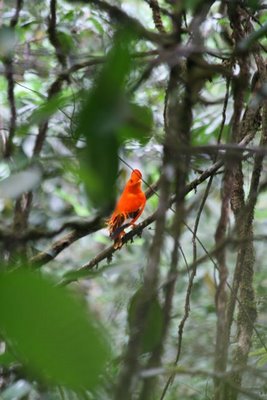
Let's blow that one up, shall we?
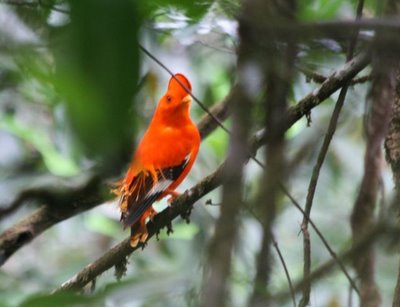
Right after I took this photo, he whirled off to a deeper, more obscure place, on a gasp of pinwheeling wings. Who'd have thought he'd be tricked out in black and white wheels? I was laid out, so much more than I'd ever hoped to see of a bird I'd dreamt of since I was seven. Ahh, thank you, cock of the rock. We'll leave you in peace now. And I will use this image later to rekindle my connection with you...
Labels: cock of the rock, Guyana birding, Guyana South America, Kaieteur Falls

